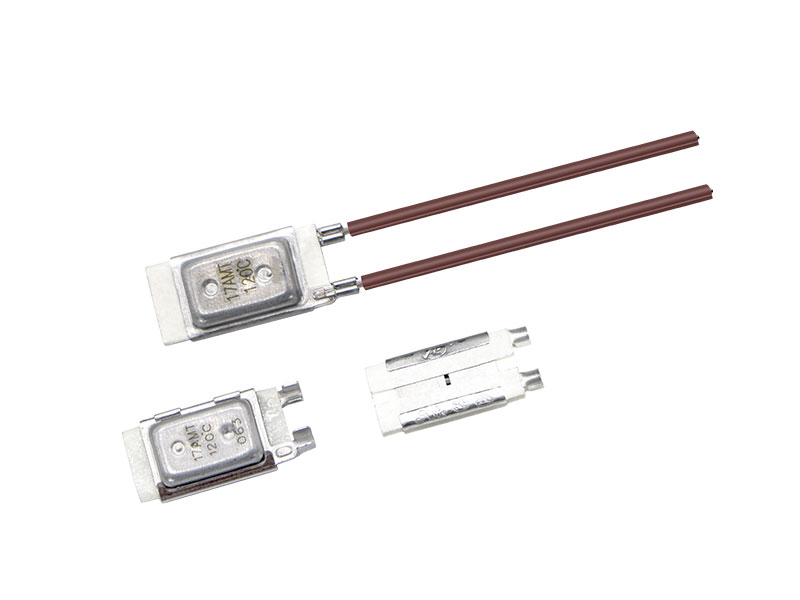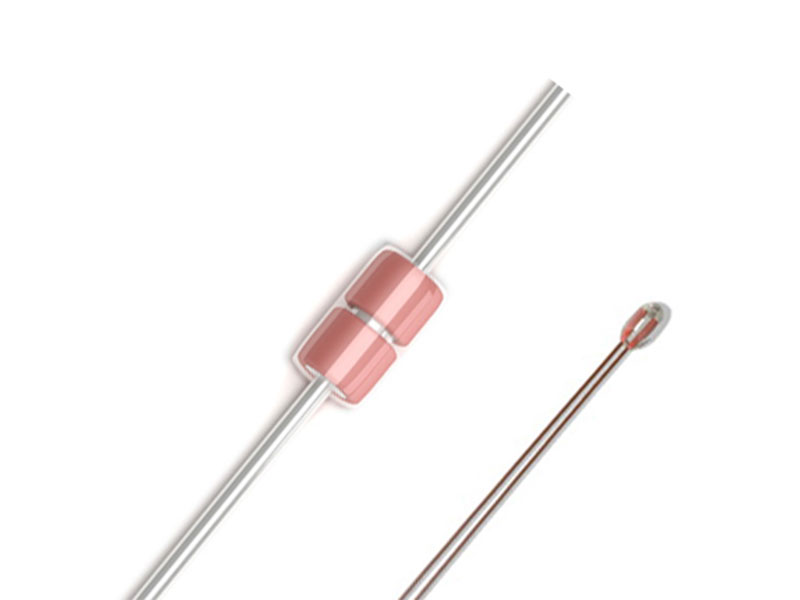The difference between temperature sensor and current temperature protector
 Jan 29, 2024|
Jan 29, 2024| View:150
View:150Temperature sensors and current temperature protectors are essential devices used for temperature monitoring and protection. Temperature sensors measure the temperature of the environment or an object and provide accurate temperature readings and monitoring capabilities. On the other hand, current temperature protectors actively intervene to prevent damage or hazards when the temperature exceeds a predetermined threshold.
Temperature Sensors
A temperature sensor typically operates by detecting and converting temperature changes into electrical signals. These signals are then processed and displayed as temperature readings.
Temperature sensors employ various technologies to measure temperature, including thermistors, thermocouples, and infrared sensors. Thermistors, for instance, change their resistance based on temperature variations, allowing for temperature measurement. Thermocouples consist of two different metal conductors that generate a voltage difference as the temperature changes, enabling temperature measurement. Infrared sensors, on the other hand, detect the thermal radiation emitted by objects to measure temperature.
Temperature sensors offer the advantage of providing accurate temperature readings and real-time monitoring. This is crucial in many applications such as industrial process control, HVAC systems, and food storage. Temperature sensors enable users to promptly detect temperature changes and take appropriate actions to ensure the smooth operation of equipment and systems.

Current Temperature Protectors
A current temperature protector monitors the temperature using a temperature sensor and compares it to a predefined temperature threshold. When the temperature exceeds the threshold, it triggers protective actions, such as cutting off power or activating alarms.
Current temperature protectors serve as active protective devices designed to prevent equipment or component damage from excessive temperatures. They are commonly used in conjunction with temperature sensors to monitor temperature and trigger corresponding protective measures. Current temperature protectors can operate using various principles, including thermistors, bimetallic strips, and thermal relays.
When the temperature exceeds the pre-set safety limit, current temperature protectors automatically cut off power, trigger alarms, or initiate other suitable actions to prevent equipment damage or hazards. These active protective devices are crucial for applications that require high reliability and safety, particularly in electronic devices, electrical systems, and industrial environments.

Are there any other types of protectors that I should consider for equipment safety?
Yes,besides current temperature protectors, there are several other types of protectors that you should consider for equipment safety.
Overload Protectors
Overload protectors are used to safeguard electrical equipment from excessive current flow. They detect when the current exceeds a predetermined limit and take action to prevent damage, such as tripping a circuit breaker or activating a motor protection device. Overload protectors are commonly employed in motors, transformers, and electrical panels.
Overvoltage Protectors
Overvoltage protectors protect equipment from voltage surges or spikes. They monitor the voltage levels and, when an overvoltage event occurs, they divert or limit the excess voltage to protect the equipment from damage. Overvoltage protectors are essential for sensitive electronic devices, such as computers, telecommunication equipment, and control systems.
Undervoltage Protectors
Undervoltage protectors ensure that equipment operates within a safe voltage range. They monitor the voltage levels and activate protective measures, such as shutting down the equipment or triggering alarms, when the voltage falls below a specified threshold. Undervoltage protectors are commonly used to safeguard motors, pumps, and other equipment that may be affected by low voltage conditions.
Short Circuit Protectors
Short circuit protectors are designed to detect and interrupt excessive currents caused by a short circuit or a fault in the electrical system. They quickly disconnect the circuit to prevent damage to the equipment or potential hazards. Short circuit protectors are commonly found in circuit breakers, fuses, and motor starters.
Ground Fault Protectors
Ground fault protectors, also known as ground fault circuit interrupters (GFCIs), detect imbalances in electrical currents caused by a fault or leakage to the ground. They rapidly interrupt the circuit to prevent electrical shocks or fires. Ground fault protectors are typically used in outlets, power strips, and equipment operating in wet or damp environments.
Surge Protectors
Surge protectors are designed to protect equipment from voltage spikes or transient surges. They divert excessive voltage to the ground, preventing it from reaching connected devices. Surge protectors are commonly used with electronic equipment, computers, home appliances, and entertainment systems.
When considering equipment safety, it is important to assess the specific risks and vulnerabilities of your equipment and choose the appropriate protectors accordingly.
Temperature sensors and current temperature protectors are vital for temperature monitoring and protection. Temperature sensors provide temperature measurement and monitoring capabilities, while current temperature protectors actively safeguard equipment or components from excessive temperatures.
That a temperature sensor focuses on measuring and monitoring temperature, whereas a current temperature protector is specifically designed to intervene and protect against temperature-related risks by taking active measures. While a temperature sensor provides valuable data, a current temperature protector adds an additional layer of safety by actively controlling the system or triggering protective actions when necessary.
A temperature sensor provides temperature readings and monitoring capabilities, while a current temperature protector actively intervenes to protect against excessive temperatures by triggering appropriate actions. Both devices serve different purposes and are often used together to ensure effective temperature control and protection in various applications.





